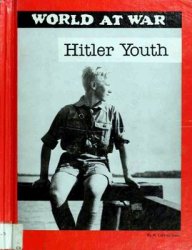The name used by various Europeans during the 16th century usually to refer to territory in the northeastern portion of the North American mainland.
The first person to use the term Norumbega (or one of its variants) was probably GlOVANNi DA VERRAZANO after his exploratory voyage of 1524 along the eastern coast of North America. The term, in the form Oranbega, first appeared in print on a map created by the explorer’s brother, Girolamo da Verrazano in 1529. Later cartographers altered the spelling, rendering it as Anorombega and Anorobegua, often located near what might be modern-day Penobscot Bay in Maine. Because 16th-century maps were created from information gleaned from travelers who often spent little time in the territory they described, it is not surprising that Norumbega often shifted place from map to map. Various Europeans speculated that Norumbega was the bountiful land described by Verrazano. Giacomo Gastaldi’s map labeled “Tierra Nueva,” which appeared in a 1548 edition of Ptolemy’s Geografia, demarcated Nurumbega as a land well north of FLORIDA but south of Labrador. Michael Lok’s map of the North Atlantic that appeared in RiCHARD Hakluyt the Younger’s Divers Voyages Touching on America, published in LONDON in 1582, had Norumbega as a large island just east of the coast of North America. To promoters such as Hakluyt, the existence of this Norumbega helped to prove the validity of Verrazano’s claims, including his belief in the existence of the Northwest Passage. By the time Cornelius Wytfliet had created his map entitled “Norumbega et Virginia, 1597,” Norumbega had become an extensive part of a well-watered North American coastline as well as a city sitting across the largest river to flow into the Atlantic from the interior.
Unable to find a location that matched Verrazano’s description, Europeans during the 17th century became skeptical about the existence of Norumbega. When Samuel de Champlain explored the region in the early 17th century, he believed that the settlement was a fiction, although, of course, it is possible that he landed in some place other than that seen by Verrazano earlier.
Further reading: Emerson W. Baker, et al., eds., American Beginnings: Exploration, Culture, and Cartography in the Land of Norumbega (Lincoln: University of Nebraska Press, 1994).
Nzinga (Nzinga Mbande, or Ana de Sousa, or Dona Anna de Sousa) (ca. 1581-1663) queen of Angola Ruler ofthe Ndongo (1624-26) and the Matamba (ca. 163063) kingdoms in what is today northwestern Angola, Nzinga Mbande led armies against the region’s Portuguese colonizers in a struggle to maintain her people’s independence.
By the early 17th century the Mbundu-speaking Ndongo kingdom dominated northwestern present-day Angola, deriving its power from the lucrative SLAVE TRADE with the Portuguese. Although trade with the Portuguese was the basis for much of the kingdom’s wealth, it was also the source of its problems when the Europeans attempted to establish a permanent presence in the area. Born during a war between her father, King Kiluangi, and the Portuguese, Queen Nzinga spent much of her life struggling against European colonizing efforts.
Popular with her people and recognized early on as a powerful leader, Nzinga’s brother, who had become king after their father died, exiled her and assassinated her son in an effort to stem any opposition to his rule. Faced with another Portuguese invasion, Nzinga’s brother recalled her from exile in 1622 and sent her as emissary to the Portuguese governor in Luanda. She negotiated in the interest of her brother, exacting several concessions from the Portuguese. In exchange for Portuguese recognition of Ndongo independence, Nzinga promised the return of Portuguese prisoners and Ndongo assistance in the slave trade. To solidify the agreement, Nzinga agreed to a Christian baptism by JESUITS and took the name Dona Ana de Sousa (or Dona Anna de Sousa).
The alliance with the Portuguese was short-lived because the Europeans reneged on their part of the agreement. Nzinga’s brother attempted to rectify the situation on his own but failed. Nzinga rallied her own supporters, renounced the Christian faith, allied with the reputedly cannibalistic Jaga people in the north, killed her brother, whom she saw as a traitor, and became queen of the Ndongo kingdom in 1624. Nzinga is frequently called the Cannibal Queen because of her connection to the Jaga, but any practice of cannibalism by her or by the Jaga cannot be substantiated. Continued conflict with the Portuguese over trade forced Nzinga to flee eastward in 1629. She conquered the Matamba kingdom (a non-Mbundu kingdom) and established herself as queen. Nzinga’s success as ruler was based on her military savvy as well as on her political elan. Nzinga created her own army of Jaga slaves, to whom she promised freedom after their service. According to one Dutch source, Nzinga dressed in men’s clothing and kept a harem of male “wives.” She led her own troops, made up partially by women warriors, and was the primary military strategist for her army. Through her alliances with the Dutch in Luanda and with the Kongo kingdom and by maintaining almost absolute control over the region’s interior slave trade, Nzinga forced the Portuguese to negotiate with her. In 1656 Nzinga and the Portuguese created a fairly stable treaty, facilitating trade relations between them and allying them against other African states. Before she died in 1663, Queen Nzinga again embraced the Christian faith. Her sister, Dona Barbara, succeeded her to the throne.
Further reading: Eric Young, “Nzinga,” in Africana: The Encyclopedia of the African and African American Experience, eds. Kwame Anthony Appiah and Henry Louis Gates, Jr. (New York: Basic Civitas Books, 1999), 1,452; “Nzinga Mbande,” in Dictionary of African Historical Biography, 2nd ed., eds. Mark R. Lipschutz and R. Kent Rasmussen, (Berkeley: University of California Press, 1986), 181-182.
—Lisa M. Brady
Ojeda, Alonso de (ca. 1465-ca. 1515) conquistador Alonso de Ojeda was a Spanish explorer who made five journeys across the Atlantic Ocean, enslaved Native Americans, and became adelantado of Coquibacoa, a place he had named near the Lake of Maracaibo.
De Ojeda first traveled across the Atlantic on the second journey of Christopher Columbus. He commanded one of the vessels that went to Hispaniola, where he explored the interior in search of wealth. He returned to Spain in 1495 but was back at sea in 1499 when he joined an expedition with Amerigo Vespucci bound for northern South America. In his travels, de Ojeda came upon the Lake of Maracaibo. When he was there, he noticed that local fishermen lived in houses suspended over the water. The site purportedly convinced de Ojeda to name the area Venezuela or “little Venice.” But de Ojeda did not act as if he had stumbled upon a settlement that he respected. Instead, like other coNQuistADores, he captured Native people, enslaved them, and robbed local pearl diving operations. For his actions he was appointed adelantado of Coquibacoa.
During the last years of his life, de Ojeda made three more journeys to the Americas. He enriched himself by plundering indigenous communities during a journey of 1502, but accusations that he did not pay the proper share to the crown prompted him to return to Spain the following year. He returned to the Americas again in 1505, 1508, and 1510. On his last journey he tried to establish a new settlement called San Sebastian on the Gulf of Uraba. But he could not withstand attacks from the locals, so he returned to Hispaniola, where he eventually died in poverty five years after he left Spain on what became his final journey.
De Ojeda was, as the historian Angus Konstam put it, “more a pillager than a settler or explorer, and his quest for wealth was the driving force behind his expeditions in the Americas.” In this sense, he resembled many other conquis-tadores and Europeans from northern Europe who looked to the Western Hemisphere as a place to enrich themselves regardless of the consequences for the indigenous peoples of the Americas.
Further reading: Angus Konstam, Historical Atlas of Exploration, 1492-1600 (New York: Facts On File, 2000).




 World History
World History









